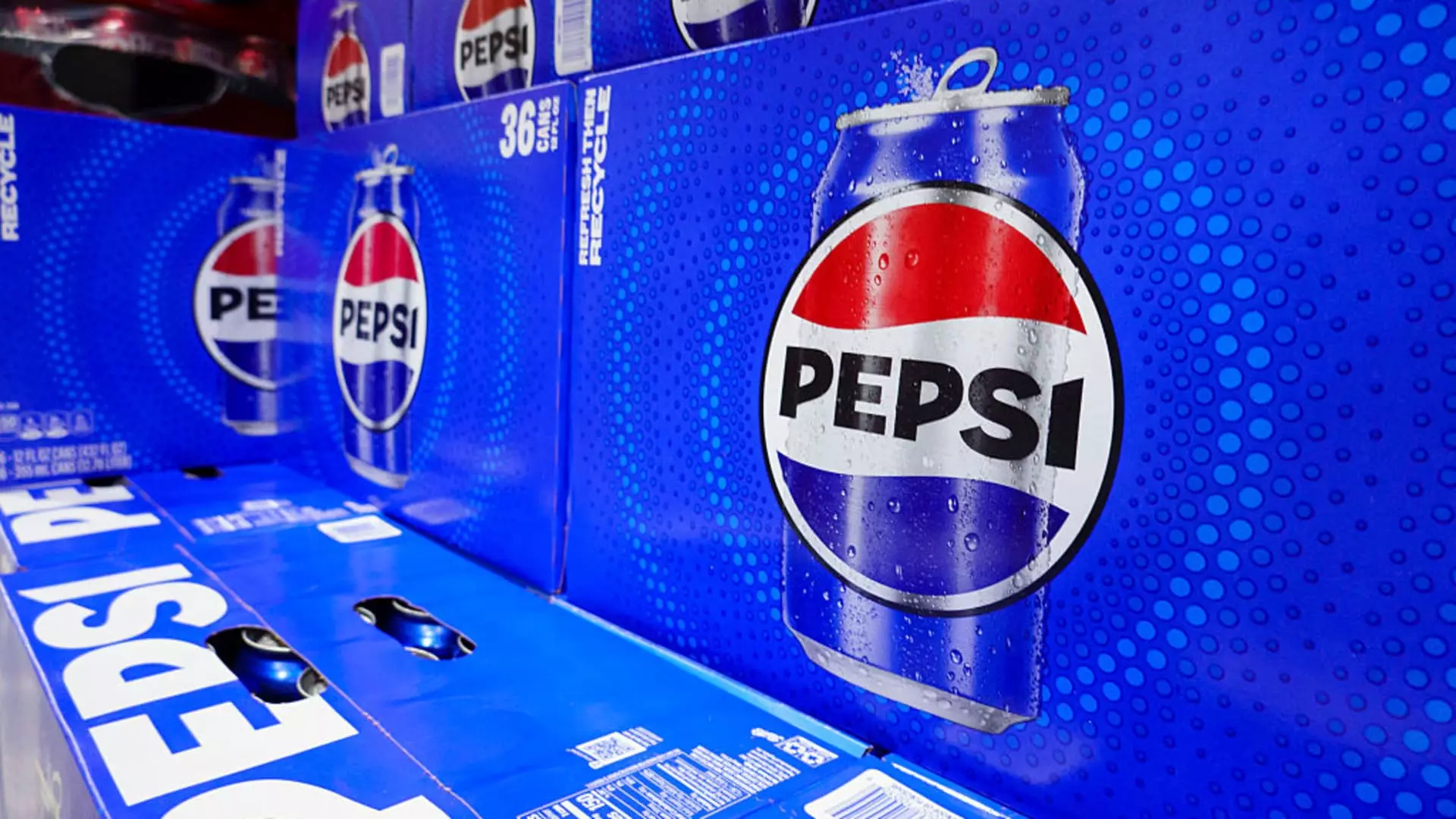PepsiCo’s recent quarterly earnings report appears to paint a picture of resilience and strategic agility. The company outperformed analyst expectations with organic revenue growth of just over 2%, and a slight uptick in overall net sales. This initial success, however, is a facade masking significant underlying problems. Despite the positive headlines, the numbers reveal a company grappling with declining demand in key markets, persistent volume drops, and a reliance on trendy health initiatives that might not sustain long-term growth. The enthusiasm of a 6% share increase in morning trading is, at best, fleeting optimism, borne out of short-term strategic adjustments rather than genuine market strength.
While PepsiCo boasts of shifting focus toward healthier snacks and multicultural product lines, the reality is that core segments—traditional sodas and snack foods—continue to face declining consumption trends. Volume figures are sobering: North American food volume shrank 1%, and beverage volume dipped 2%. These aren’t signs of an unstoppable growth trajectory but symptoms of a market that’s turning away from traditional mass-market products. The focus on leaner operations and cost-cutting—closing plants and refining logistics—are necessary, but they also highlight the company’s struggle to foster organic growth in its core segments.
Strategic Shifts: Band-Aids or Foundations for Future Growth?
Pepsi’s leadership is quick to highlight new strategies: lean into healthier options, enhance product placement, and streamline operations. These moves, seemingly positive, are largely reactive responses to declining demand rather than proactive innovations. Companies like Siete Foods and Sabra are cultural trends rather than permanent solutions—a gamble that multicultural products alone can reignite sales in stagnant categories.
The re-launch of classic brands like Lay’s and Tostitos, emphasizing core ingredients, appears more of a marketing pivot than a fundamental change in market share ambitions. These efforts might stabilize sales momentarily but don’t address the deep-rooted issue: consumer preferences continue shifting away from mainstream snacks and sodas, especially among younger demographics. The emphasis on healthier snacks and beverages might capture niche markets outdoors of mainstream supermarkets but will struggle to reverse the long-term decline of Pepsi’s legacy offerings.
Furthermore, leadership’s optimism about North American demand rebounding is overly simplistic. The notion that market demand will “recover” as strategy takes hold underestimates the structural changes ahead. Consumers are increasingly health-conscious, and local competitors and craft brands are siphoning market share with more authentic, health-oriented options. Pepsi’s attempt to make its logistics and marketing more efficient is necessary but insufficient without a fundamental reinvention of its product portfolio.
The Cost-Cutting Mirage and the Real Erosion of Brand Value
While reducing costs through plant closures and operational efficiencies might improve short-term profit margins, it also risks stifling growth potential. These measures limit production flexibility and inhibit innovation in a rapidly evolving marketplace. Relying on restructuring rather than investing in new, compelling products signals caution rather than confidence.
Additionally, the emphasis on marketing efficiency, while prudent, underscores a problem: Pepsi is reevaluating its brand equity. An over-reliance on marketing dollars over genuine product innovation indicates a company scrambling to maintain relevance without addressing the fundamental decline in core brand strength. This approach could lead to a cycle of short-lived sales boosts followed by deeper long-term attrition.
Pepsi’s cautious outlook—expecting flat earnings and low-single-digit revenue growth—should serve as a wake-up call rather than a comfort to investors. The company’s belief that “the worst is behind us” ignores persistent volumes decline and a consumer landscape that’s increasingly segmented and health-conscious. If anything, Pepsi’s current trajectory resembles prolonged patchwork solutions that risk delaying inevitable market share erosion.
In the End, the Question Is: Are We Watching a Company on the Verge of Decline?
PepsiCo’s recent strides, while superficially encouraging, serve as evidence of a company desperately patching holes in a sinking ship. The core challenge remains: how does a legacy beverage and snack giant reinvent itself amid changing consumer tastes? Relying on tweaks, such as product relaunches, multicultural offerings, and operational efficiencies, may buy time but do little to address the fundamental issues of brand relevance and product innovation.
True growth will require bold, perhaps uncomfortable, shifts—investments in new categories, radical changes to product lines, and a focus on authentic health-driven innovations that resonate with the modern consumer. Without these, Pepsi’s optimistic projections and rising shares might just be fleeting mirages—temporary distractions from a business facing deceleration, declining core loyalty, and an uncertain future. As the company continues to cling to a model of incremental adjustment, it risks becoming a relic of the past—an aging empire struggling to adapt in a landscape that rewards innovation over tradition.

